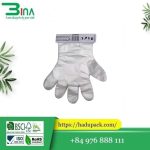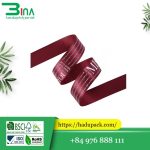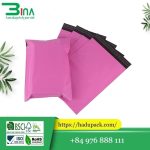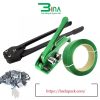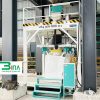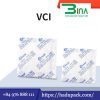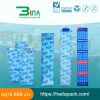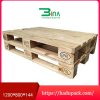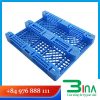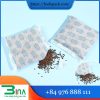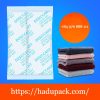Container Desiccants – moisture absorbers for shipping
The desiccant cord hangs containers easily to help control excessive humidity that leads to musty odors, stains or corrosion on stored boats, RVs or seasonal homes. Special crystals automatically remove moisture from the air, safely deposited in a convenient carrying case. Great for cabins, tops, closets and other enclosed spaces. In addition, you can use moisture-proof paper instead in each permitted condition.
Where does the water inside the container come from?
Moisture can accumulate from the air when the goods are unloaded, water vapor is available inside the goods, the wooden floor of the container. Normally, the humidity inside the container should not exceed 14%. This is the humidity recommended by the Import-Export Association.
But when in fact the majority of commercial ports still use containers with an average humidity of nearly 18%. Even higher than 25% because of the shortage of containers.
In the container is an enclosed space and the amount of air convection is low, so the temperature is always 10°C higher than outside.
With a rather large temperature difference between day and night in the ocean. This is also a condition that seriously affects the moisture trapped in the container.
TECHNICAL SPECIFICATIONS/ Technical Specification
- Weight: 1000gr (1kg)/hanging bag
- Hygroscopic capability: 300% @ 90% RH
- Suitable temperature/Operating temperature: 0-90 degrees Celsius
- Chemical composition/Chemical content: Salt Calcium Chloride (CaCl2)/ Major CalCium Chloride
Quantifying/Quantifying for container usage:
Depending on the characteristics of the goods, ambient temperature and transit time, the required number of desiccant bags ranges from 6-12 bags/container 20″ or 12-16 bags/container 40″.
If the goods have high humidity or the transportation/journey conditions are not favorable, additional desiccant bags can be used to ensure the goods are well protected.
Note: It is necessary to calculate the expected moisture content based on the characteristics of the goods, packing method, ambient temperature and transit time, please contact us for specific advice.
Features of hanging container desiccant cord
- Designed to help prevent musty odors in boats, preserved RVs or seasonal homes.
- Absorbs moisture in the air to help prevent musty odors.
- Eliminates musty odors and other musty odors.
- Protect boats in warehouses, motels, basements and other enclosed areas.
- Features an anti-spill bag to safely keep collected moisture.
Detailed usage steps of container desiccant
Check the packaging before use:
Before applying desiccant to the container, inspect the container, making sure that:
1. The door, walls, floor and roof of the container are not damaged: It is undamaged: no holes, no gaps in the floor, wall or ceiling.
2. The container is dry and clean: It is clean and dry.
3. Detect the moisture content of the wooden floor in the container, should not exceed 25%, preferably in the range of 18%.
Check the humidity of the container floor, it is best to keep it below 18%, not exceed 25%, It is better to increase the amount of desiccant in the container.
① When the moisture content of wood floors exceeds 20%, 1kg of desiccant should be added for each 1.5% increase in humidity.
For floors with humidity exceeding 20%, add 1 pc 1kg desiccant for every 1.5%.
② When transporting cotton and linen products and goods with moisture content exceeding 18%, 1kg desiccant should be added to the container for each 1.5% increase in humidity.
For ramie cotton or other products with moisture content exceeding 18%, add 1 pc 1kg desiccant for every 1.5%.
③ For goods with high moisture content such as grass and rattan textiles and palm products, 2kg of desiccant should be added to each container when the humidity increases by 1.5%.
For rattan, palm products or other high moisture products, add 2 pcs 1kg desiccant for every 1.5%.
Detailed Steps (Using Steps):
- STEP 1: Seal all the air outlet holes inside the container, if the air outlet holes are not sealed, the desiccant in the container will not be able to continuously absorb moisture into the container. Seal the vents, make sure the desiccant stays sealed.
- STEP 2: Open the desiccator packaging and take out a desiccant bag; Open the sealed desiccant bag and take out a desiccant box. Take the desiccant out of the box, make sure it’s useful.
- STEP 3-1: This kind of container desiccant bar is soft and has hook, please use ladder to hang the desiccant on the rings on both sides of the container. 1kg container desiccant without hard cap hangs along the container wall, please use ladder for help.
- STEP 3-2: This desiccant container has a hard paper color card cover, with a very nice and sturdy hanger. The desiccant can be hung directly on the hanging rings on both sides of the container.
- 1kg container desiccant with multicolored hard cap hanging along the container wall.
- STEP 3-3: This type of container drying strip has hooks and lanyards, please fix the hooks and lanyards to the loops on either side of the container, so that they hang on the top of the container and pull as flat as possible. The 1.4kg container desiccant has a shoulder hanging on the top of the container.
- STEP 3-4: This type of container dry bag is small in size, flexible in use, mainly placed flat on the top of the cargo. Takes up almost no excess space, be careful not to squeeze when using. Desiccant beads in the form of 1kg barrel without hook, flatten the desiccant layer on the surface of the barrel, do not press!
- STEP 4: After the container desiccant is hung, please load the goods into the container as soon as possible. Keep the loading time short after suspending the desiccant.
- STEP 5: After hanging, please close the container door as soon as possible to prevent the container’s desiccant from contacting the open space for a long time. Close as soon as possible.


